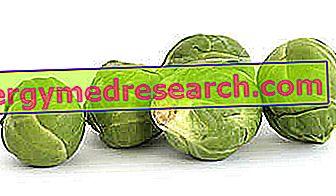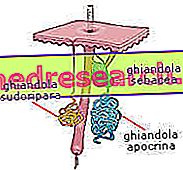Generality
Brussels sprouts are edible shoots of the herbaceous plant Brassica oleracea L., gemmifera variety, belonging to the C rucifera family. They are also known as Brussels sprouts, and belong (like broccoli and many others) to the cabbage category, although:
- Unlike cauliflower and broccoli, Brussels sprouts are sprouts (light green) and not the flower of the plant
- Unlike cabbage, cabbage etc., Brussels sprouts produce numerous (up to 40 at a time) and small shoots (excellent when they reach about 3cm in diameter), but not a single large central shoot.

Grow Brussels sprouts
Brussels sprouts are easy to grow; the method and the needs are absolutely close to those already described for broccoli even if, more than them, they require a correct calibration of the fertilizer to avoid that ("fattening" the soil too much) the sprouts are excessively numerous and of poor quality.
| Nutritional composition per 100 grams of edible portion Brussel sprouts, raw : | ||||||||||||||||||||||||||||||||||||||||||||||||||||||||||||||||||||||||||||||||||
 | ||||||||||||||||||||||||||||||||||||||||||||||||||||||||||||||||||||||||||||||||||
Nutritional values (per 100 g of edible portion)
| ||||||||||||||||||||||||||||||||||||||||||||||||||||||||||||||||||||||||||||||||||
On the contrary, the use of ash for the enrichment of the earth favors the compactness of the shoots. The ideal in the cultivation succession of the vegetable garden / field for the production of Brussels sprouts would be: potatoes and Brussels sprouts or peas and Brussels sprouts. The sowing must be done (with a space of 50 * 50) towards the end of April or early May in the greenhouse, and the transplant in the open field NOT later than mid-June. NB: At the end of production it is necessary to trim (cutting the tops) the plant of the Brussels sprouts to concentrate the vegetative energies on the last production of sprouts.
Nutritional characteristics
Brussel sprouts are vegetables that belong to both VI and VII food groups, since they contain high amounts of vitamin C ( ascorbic acid ) and β-carotene ( retinol eq. - pro-vitamin A ); by virtue of this vitamin content associated with richness in other antioxidants (phenolic substances), Brussels sprouts are considered useful foods for cancer prevention, while the dietary fiber content is particularly effective in regularizing intestinal peristalsis (against constipation).
The intake of potassium and iron from Brussels sprouts (although not very bioavailable) is considerable but, on the other hand, they are also rich in purines (like most Brassica oleracea ), a characteristic that makes them unsuitable for diet against hyperuricemia or gout.
NB . Due to their characteristic cold resistance, Brussels sprouts (especially in the past) have been and still are foods with a DETERMINANT nutritional function; these, like oranges for the countries of the Mediterranean basin, provide equivalent vitamin C and retinol even in the most rigid season, at which time it is NOT possible to find other foods that contain the same essential molecules.
Brussels sprouts with Besciamella Light
X Problems with video playback? Reload from YouTube Go to Video Page Go to Video Recipes Section Watch the video on youtube



